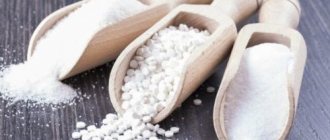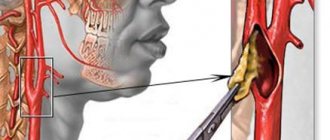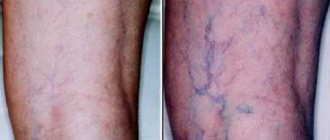- August 19, 2018
- Endocrinology
- Nadezhda Devlyashova
Diabetes mellitus is a disease that requires special attention and brings a lot of discomfort to the patient. Unfortunately, today it ranks third in mortality, second only to cardiovascular diseases and cancer. Modern research in this area is being brought to the federal level, since diabetes mellitus is the most important problem in medicine. New medications, tablets for type 2 diabetes, a list of which is presented below, allow patients to ensure normal life activities. Every year, scientists receive more and more effective remedies that, although they do not cure this disease, make the life of patients significantly easier.
Types of diabetes
Before studying the list of pills for type 2 diabetes, let’s briefly look at the features of this disease. There are two types of diabetes. In both cases, patients suffer from high blood sugar, but it rises for different reasons.
In insulin-dependent diabetes (type 1), the body is not able to produce this hormone itself. The cause is the destruction of pancreatic cells. Patients with type 1 diabetes should definitely use insulin.
With normal functioning of the pancreas, but due to the fact that it does not produce sufficient doses of the hormone, or the cells do not perceive it, type 2 disease develops - this is non-insulin-dependent diabetes. In this case, due to the large intake of carbohydrates, blood sugar rises. People with type 2 diabetes are often overweight. They are advised to limit their intake of carbohydrate foods. In addition to proper diet, drug therapy plays a significant role. Medicines are prescribed only by a doctor, who is based on the individual characteristics of the patient.
Numerous studies prove the fact that proper control of the disease prevents many complications. Glycemic control virtually eliminates the risks of micro- and macroangiopathy. Simultaneous monitoring of blood pressure prevents the development of cerebrovascular and ischemic diseases. Unfortunately, it is not possible to completely get rid of diabetes, but new generation medications provide patients with the opportunity to control their own condition and lead a normal lifestyle.
Insulin therapy
In the treatment of non-insulin-dependent type 2 diabetes, insulin therapy is the most controversial link. On the one hand, this can be explained by the lack of a unified concept of the etiology of the pathogenesis of the disease, but on the other hand, by the lack of guarantees of the effectiveness of this treatment method. Indeed, if it is not clear what caused type 2 diabetes, where the primary place of failure is: at the level of hormone synthesis in the pancreas or in the periphery, how can one correctly answer the question about the advisability of treating obese patients with high blood sugar with insulin.
But there are situations when the issue of insulin therapy is easily resolved. When glycemia is more than 15.0 mmol/l, insulin is always prescribed. Long-term hormone therapy is indicated if it is impossible to use drugs in tablets due to contraindications to their use, resistance to sugar-lowering drugs in type 2 diabetes, severe complications in the later stages of the disease (retinopathy, polyneuropathy, nephropathy, cardiomyopathy, encephalopathy).
The goal of insulin therapy is to achieve normal, stable blood sugar levels. The indicators are correlated with the patient’s age, the risk of complications, and the presence of concomitant pathologies. You need to understand that once you switch to insulin injections, there is no turning back to pills.
Indications for the temporary prescription of insulin may include operations, a concomitant course of corticosteroids, high fever, acute inflammation of an etiology independent of diabetes: ARVI, allergies, influenza and sore throat. Severe stress may require short-term hormone injections.
WHO recommends the use of insulin therapy only in case of unsuccessful treatment of type 2 diabetes mellitus by all possible means using tablets. Start with a combination of Metformin and long-acting insulin at night. The average daily dose of the hormone is usually 0.16 units per kg of body weight/day. All further calculations are the prerogative of the doctor.
Drug control
When making a disappointing diagnosis of diabetes mellitus, first of all, the patient must completely reconsider his lifestyle. It is necessary to increase physical activity, develop a weight loss program, and adjust nutrition. Only in this case can the desired effect be achieved. To lower blood sugar levels, you will need to use drug therapy. Each patient’s body is individual, so the prescription of medications should be done exclusively by a doctor. He knows what the list of pills for type 2 diabetes should be.
The main task is to maintain a clear balance, reduce glycated hemoglobin, reduce the risks of its influence, and the manifestation of various complications. Do not forget about all sorts of side effects.
First of all, the doctor prescribes the patient to take Metformin. In the absence of contraindications, this is the main, first step in drug therapy. The drug has a beneficial effect on sugar levels, helps reduce weight, and the cost of the drug is not high.
Is it possible to take medications for type 2 diabetes on your own?
You can think about developing diabetes mellitus if you experience the following symptoms:
- constant thirst,
- dry mouth,
- increased urination,
- skin itching,
- muscle weakness,
- obesity,
- slow healing of wounds.
In this case, you should immediately consult a doctor who will conduct an additional examination, make the correct diagnosis and prescribe complex therapy.
Under no circumstances should you self-medicate. Only a doctor can select the necessary medications and correctly calculate the dosage.
Medicines for type 2 diabetes: list
There are many medications available to treat this disease. All of them are classified into these groups:
- Biguanides.
- Glitazones (thiazolidinediones).
- Dipeptidyl peptidase inhibitor - IV.
- Sulfonylureas.
- Alpha glucosidase inhibitor.
- Glinids (prandial regulators).
- Incretin mimetics.
If the doctor has prescribed pills for diabetes, the list of them is quite extensive, you must follow his instructions. Based on the nature of the disease, he will determine which ones are suitable for you.
Excess blood glucose is reduced in several ways. There are drugs that can stimulate insulin production (glinides and sulfonylureas); Thiazolidinediones and biguanides improve its absorption; new groups help block glucose absorption, reduce appetite, and lose weight.
New generation drugs for type 2 diabetes
Older generation drugs cause many unwanted side effects such as weight gain or the emergence of resistance. They also have a large number of contraindications, which, in principle, complicates the treatment of certain groups of patients.
These factors prompted scientists to create new drugs, the effectiveness of which will be many times higher. They appeared at the beginning of the 21st century and are popular among doctors.
First of all, we are talking about dipeptidyl peptidase-4 (DPP-4) inhibitors or gliptins. DPP-4 is an enzyme that destroys incretins in the body - hormones that stimulate the production of insulin.
The diabetic body does not have enough of these substances, so the enzyme must be blocked. This is what DPP-4 inhibitors do, allowing incretins to work much longer. Drugs in this group include drugs such as Januvia and Ongliza.
Januvia
The active ingredient of this drug is sitagliptin. Taking one dose of Januvia leads to blocking of DPP-4 for 24 hours.
As a rule, Januvia is used in the treatment of type 2 diabetes mellitus in combination with older generation drugs, but can also be used as monotherapy.
The medicine has the following contraindications:
- individual intolerance,
- type 1 diabetes mellitus,
- pregnancy and breastfeeding,
- children under 18 years of age,
- renal failure,
- pancreatitis.
During clinical trials, the drug caused virtually no side effects. Some patients reported complaints of headache, nausea and abdominal pain, but these were extremely rare.
Taking Januvia should be accompanied by strict medical supervision, especially if the patient suffers from diseases of the gastrointestinal tract.
In case of overdose, standard symptomatic therapy is prescribed. There are no restrictions on driving a car or engaging in other potentially dangerous activities.
Ongliza
The active ingredient in this drug is saxagliptin, another DPP-4 inhibitor. This is a very powerful enzyme blocker, the effect of which also lasts for 24 hours after administration.
Ongliza is recommended for the treatment of type 2 diabetes mellitus as an adjunct to diet or other insulin-stimulating medications.
Contraindications for use are as follows:
- allergic reaction to the components of the drug,
- type 1 diabetes mellitus,
- galactose intolerance and lactase deficiency,
- pregnancy and lactation,
- children under 18 years of age.
Under the supervision of a physician, the drug can be taken by patients with renal failure, pancreatitis, as well as elderly people.
During monotherapy with Onglyza, the following side effects were noted:
- respiratory and urinary tract infections,
- vomit,
- headache.
With combination therapy, side effects occurred less frequently.
In case of an overdose of the drug, hemodialysis is performed in order to speed up the elimination of saxagliptin from the body.
In clinical practice, GLP-1 agonists are used, a biologically active substance that is produced in the small intestine and regulates glucose metabolism through the production of insulin.
GLP-1 agonists help reduce body weight, regulate blood pressure, and protect pancreatic cells. The popular drugs of this group, Bayeta and Victoza, are actively used by doctors in the treatment of non-insulin-dependent diabetes.
Baeta
This drug is not available in tablet form, but as a solution for injection under the skin with the active substance exenatide. The medicine is injected into the thigh, abdomen or forearm.
As a rule, Byeta is prescribed as an additional therapy to older generation drugs if the desired therapeutic effect has not been achieved.
The drug is contraindicated in the following cases:
- the presence of individual intolerance,
- type 1 diabetes mellitus,
- renal failure,
- diseases of the digestive system,
- children under 18 years of age,
- pregnancy and lactation.
Unfortunately, taking this medicine is often accompanied by unpleasant side effects:
- nausea and vomiting,
- loss of appetite,
- hypoglycemia,
- general weakness and tremors of the limbs.
Experts note that side effects can be relieved by lowering the dose of the drug. When using a dose greater than the maximum recommended, the patient experiences nausea, vomiting and hypoglycemia quickly develops.
Patients taking Byeta's medicine should be constantly under medical supervision and it is not recommended to administer the drug intramuscularly or intravenously.
Victoza
The drug is available in the form of a pen syringe with a solution of liraglutide. It is an analogue of human GLP-1. Administer once a day.
It is used, like all other drugs, either as monotherapy or in combination with other drugs of the old generation.
Contraindications and side effects of Victoza are similar to the drug Byeta.
Before you start using it, you need to carefully study the operation of the syringe pen, and also be under constant medical supervision.
The next group of drugs used in the treatment of diabetes are alpha-glucosidase inhibitors. They slow down the absorption of complex carbohydrates in the small intestine. One of the most popular drugs in this series are Glucobay tablets.
Glucobay
The active substance of the drug is acarbose, which is used in the treatment of diabetes mellitus of both types.
The drug is contraindicated during pregnancy, childhood, allergies and in the presence of serious diseases of the digestive system.
Glucobay enhances the hypoglycemic effect of other antidiabetic drugs, therefore it is used only in combination therapy.
Side effects are rare, and the dosage of the drug is selected individually for each patient.
Biguanides
In modern medicine, biguanides are used quite widely, although they have been used for half a century. Considering the list of tablets for type 2 diabetes (biguanides), it is worth noting that some of them are not used now and are hopelessly outdated. These include Buformin and Phenformin. Doctors refused them because these drugs cause a side effect - lactic acidosis.
In modern medicine, only Metformin is considered significant. The drug has a broad effect and helps reduce blood sugar levels. Working in tandem with insulin, it reduces the liver's production of glucose, while the sensitivity of hepatocytes increases, as does glycogen synthesis. Glycogenolysis decreases. The number of receptors increases, the action of insulin increases. The removal of glucose from the body is facilitated and the processes of its utilization are accelerated. Exacerbations of glycemia are smoothed out, there is no absorption of glucose into the intestines.
So, in the list of medications for type 2 diabetes, Metformin occupies one of the leading places.
The main effect of the drug is to block the increase in blood sugar. Metformin also reduces the risk of blood clots. The medicine is well tolerated by patients.
Speaking about Metformin, it cannot be said that this medicine has faded into the background. He still helps out the sick and saves them from an insidious illness. Although the new generation of drugs must be given their due.
"Metformin"
This drug is prescribed to adult diabetics of all types. Under its influence, not only the absorption of glucose by the intestine decreases, but also glucogenesis in the liver is noticeably inhibited, and glucose is utilized. Body weight stabilizes or decreases. How to take Metformin for diabetes? The dosage is set personally and only by a specialist. Typically, the initial phase of the treatment course consists of one or two tablets per day. After two weeks, the dosage may change, taking into account the blood glucose level. The permissible maximum is 6 tablets per day. For older people, the recommended serving is 2 tablets. The medicine is taken together or after meals.
There is one small nuance: to avoid problems with digestion, the recommended dose should be divided into a couple of doses. When taking the medicine with water, you should consume a small amount of this liquid.
Sulfonylureas
The list of medications for type 2 diabetes mellitus invariably includes sulfonylureas. Their action is based on the activation of insulin secretion. The drug acts directly on the pancreas - it opens calcium and closes potassium ATP-sensitive channels. The fact that the effect occurs only on pancreatic receptors is very important, since the closure of potassium channels in neurons, cardiac muscle, and epithelium could cause irreversible consequences.
Treatment begins with minimal dosages, which are gradually increased once a week until the desired sugar level results are obtained.
Sulfonylurea drugs have their own characteristic side effects. These include:
• disturbance of electrolyte balance of blood;
• weight gain;
• hypoglycemia;
• intestinal disorder;
• rash, itching on the skin;
• hepatotoxicity.
Medicines for type 2 diabetes (list of sulfonylureas):
• "Glibenclamide".
• "Glimepiride".
• "Euglucon".
• "Gliquidone".
• "Glipizide".
DPP-4 inhibitors
Immediately after eating, a number of processes are launched in the body aimed at normalizing glucose and cholesterol levels, and facilitating the effective absorption of nutrients entering the body with food. Medicines from the group of DPP-4 inhibitors for diabetes help normalize these processes and the production of incretins. Thus, taking the drugs ensures that the body produces its own insulin, but only when glucose levels increase.
Unlike medications that stimulate the pancreas to constantly produce insulin, DPP-4 inhibitors promote increased production of this hormone on demand, that is, only when plasma sugar levels are elevated.
Treatment with these drugs provides:
- decrease in fasting blood sugar concentration;
- preventing an increase in glucose levels immediately after eating;
- normalization of glycated hemoglobin levels;
- normalization of the function of cells responsible for the production of insulin.
The drugs do not promote weight gain, so they can be taken even by obese patients. Popular new drugs:
- Januvia tablets;
- drug Galvus;
- medicine Ongliza.
These drugs are available only in tablets. The medication regimen is selected by the doctor; usually only one tablet is prescribed per day after meals. When taking the drug Januvia, the DPP-4 enzyme is blocked for a day. The drug is available in various dosages. Januvia can be taken during treatment with metformin, as well as with insulin injections.
The medicine does not affect the patient's body weight. This is considered both an advantage and a disadvantage. Weight gain does not occur when taking the pills, but the patient’s weight loss is also not observed.
The effect of Galvus and Ongliza tablets is no different from the effectiveness of treatment with Januvia tablets. The choice of drug is made by the attending physician individually for each patient, based on the characteristics of the course of the disease. These medications have no side effects.
Clinical picture
According to Decree No. 56742, every diabetic can receive a unique remedy at a special price!
Doctor of Medical Sciences, Head of the Institute of Diabetology Tatyana Yakovleva
I have been studying the problem of DIABETES for many years. It's scary when so many people die and even more become disabled due to diabetes.
I hasten to report good news - the Endocrinological Research Center of the Russian Academy of Medical Sciences managed to develop a medicine that completely cures diabetes mellitus. At the moment, the effectiveness of this drug is approaching 100%.
Another good news: the Ministry of Health has achieved the adoption of a special program under which the entire cost of the drug is compensated. In Russia and the CIS countries, diabetics up to
On July 6th they can receive the product -
FREE!
Find out more>>
Thiazolidiones (glitazones)
Drugs in this group are capable of acting on receptors and are considered to be a new generation of hypoglycemic agents. The drug interacts with receptors located in the nuclei of muscle and fat tissue cells. Insulin sensitivity here is due to increased expression of numerous genes that encode proteins, which in turn are responsible for the functioning of glucose and fatty acids. In Russia, the list of tablets for type 2 diabetes mellitus (glitazones) includes only two drugs:
- "Rosiglitazone";
- "Pioglitazone".
These medications are not suitable for patients with heart failure of class 3-4, as well as for those who have an increase in liver transaminases more than three times. The drug is prohibited during pregnancy and breastfeeding.
Studies have proven that the glitazone group has a significant effect in the treatment of type 2 diabetes. When using Rosiglitazone every day (the dosage is selected by the attending physician), in the absence of side effects, the glycemic level decreased by 2-3 mmol/l.
Amaryl against diabetes
Amaryl is a medicine for the treatment of “sweet” disease, manufactured in Germany, intended for oral use. Depending on the dosage, the color of the tablet differs: 100 mg - pink tablets, 200 mg - green tablets, 300 mg - yellow, 400 mg - blue.
The main indication for use is type 2 diabetes, which could not be corrected through a low-carbohydrate diet, physical activity and other methods.
Contraindications: type 1 diabetes, due to complications of diabetes mellitus, coma, precomatose state, severe dysfunction of the liver and kidneys, pregnancy, breastfeeding.
Features of application:
- The dosage in each specific case is individual and depends on the initial blood sugar levels.
- Usually 100 mg is recommended. The tablet needs to be taken once a day. Either in the morning immediately before breakfast or after it.
- Take the medicine with plenty of regular liquid.
- If no therapeutic effect is observed, the dosage is increased at intervals of 7-14 days.
New information: Dialock for diabetes: disadvantages and benefits of the drug, reviews
Reviews from patients show that the drug acts effectively and quickly, and stably keeps sugar within the required norm. While taking the drug, your overall well-being significantly improves.
Along with this, it is noted that the drug leads to numerous adverse reactions: headache, sleep disturbance, hallucinations, tremors of the limbs, convulsions, speech disorders and even loss of consciousness.
As all of the above shows, a new drug for the treatment of diabetes is not always better than long-proven drugs. In any case, the doctor decides which remedy is suitable in a given situation.
What do you think about this? Have you been prescribed the latest medications to treat diabetes, and which ones?
Prandial regulators (glinids)
This group of drugs has a short effect. A decrease in sugar levels occurs due to a sharp stimulation of insulin secretion. The group of prandial regulators makes it possible to control the level of glycemia, including immediately after eating. They have an effect on the pancreas similar to sulfonylurea drugs: they close ATPK-sensitive tubules and open calcium ones. Calcium entering beta cells promotes the production of insulin. The difference between the drugs is that glinides affect different parts of the surfaces of beta cells.
Medicines for type 2 diabetes mellitus (list of glinides):
- Repaglinide.
- "Nateglinide."
New medicines
DPP-4 inhibitors are new generation drugs; they have been used since 2006. Such medications by themselves do not affect the formation of insulin. They are able to protect glucagon-like polypeptide 1 (GLP-1), produced by the intestines, from destruction by the DPP-4 enzyme.
This is where the name of these medicines comes from. GLP-1 provokes the production of insulin, which reduces sugar levels in the human body. In addition, GLP-1 does not allow glucagon to develop, which, in turn, prevents insulin from exerting its effect.
The positive point is that such drugs do not provoke hypoglycemia, since they cease to have an effect once the sugar level has stabilized. They do not increase body weight and are used with almost all drugs. The exception is injectable GLP-1 receptor agonists and insulin (only Galvus can be prescribed). Medicines can cause adverse reactions associated with abdominal pain, and it is also not advisable to use them for liver or kidney pathologies. Today, common drugs include saxagliptin (Ongliza), sitagliptin (Januvia) and vildagliptin (Galvus).
GLP-1 receptor agonist is a hormone that not only signals the pancreas to produce insulin, but also reduces appetite and repairs damaged beta cells. Since GLP-1 is destroyed within 2 minutes after eating, it cannot fully influence insulin production. Therefore, there are analogues of Victoz and Byeta, which are produced in the form of injections. It should be taken into account that the latter drug lasts only a few hours, and Victoza lasts all day.
Alpha-glucosidase inhibitors prevent carbohydrates from being converted into glucose. Such drugs are most useful in cases where, after eating, a diabetic has an increase in glucose concentration. Diabetic medications can be used in combination with any hypoglycemic drugs. Significant negative consequences when taking alpha-glucosidase inhibitors are digestive problems - flatulence, diarrhea. Therefore, they cannot be used for intestinal diseases. Combined use with metformin is also undesirable, because it can cause increased symptoms of gastrointestinal dysfunction.
Expert opinion
Guseva Yulia Alexandrova
Specialized endocrinologist
The main representatives of such drugs are Glucobay and Diastabol.
α-glucosidase inhibitors
The list of drugs for type 2 diabetes contains drugs from the group of alpha-glucosidase inhibitors. Their hypoglycemic effect occurs due to the displacement of carbohydrates obtained from food. In this case, the center of the binding enzymes is blocked.
In Russia, endocrinologists currently use only one inhibitor - the drug Acarbose. The medicine acts in such a way that although the amount of carbohydrates does not decrease, their processing noticeably slows down, this helps prevent sudden jumps in blood glucose levels.
The medicine has a beneficial effect on the pancreas. Protects it from exhaustion and performs some of its functions.
Acarbose has been studied for the prevention of type 2 diabetes. The results met expectations. In a group of patients with impaired glucose sensitivity, the risk of developing diabetes was reduced by 37 percent (more than a third).
On average, a medicine costs from 700 rubles. It comes in tablet form. The medicine can be taken three times a day. The doctor prescribes the dosage based on the results of the blood test. The drug is consumed with the main meal. The activity of the active substance remains for eight hours.
Treatment
Diabetes is one of those types of diseases in the treatment of which identifying the cause of the disease plays an important role. Against the background of drug therapy, a prerequisite is the restructuring of the patient’s lifestyle, especially in terms of giving up bad habits. The consumption of foods with a high glycemic index (the ability to increase blood sugar) should be reduced. The general treatment regimen for diabetes is approximately the same for men, women, children and the elderly.
It is recommended to reduce the level of animal fats and simple carbohydrates in your diet. Meals should be regular and in small portions. It is necessary to get an idea of energy expenditure during the day and, depending on this, plan the caloric intake of food. If you have a sedentary lifestyle, you should not eat a bowl of soup and a frying pan of potatoes with meat, washing it all down with sweet tea. You should not neglect medications if they are prescribed. Physical activity in the form of jogging or swimming is indicated.
Incretin mimetics
The list of medications for type 2 diabetes includes the drug "Exenatide", recognized by all doctors in the world community. Incretins are hormones produced by the gastrointestinal tract, and their function is associated with the effects of diabetes medications. When eating, hormones are formed that are responsible for the secretion of gastric juice, the function of the gallbladder, and, of course, for the absorption of nutrients.
"Exenatide" acts at the hormonal level. Stimulates the production of insulin, while the secretion of glucagon slows down. Thus, blood glucose levels are maintained at normal levels.
Exenatide therapy is started with 5 mcg for an hour twice a day. After a month of use, you can double the dose. At the very beginning of such treatment, the patient may feel nausea, but this effect disappears after 2-3 weeks.
The effectiveness of the drug has been proven when used in combination therapy with sulfonylurea drugs, in particular as an addition to Metformin.
Tolinase and diabetes therapy
Tolinase is a drug for the treatment of diabetes; it belongs to the first generation sulfonylurea derivatives. It is recommended only in cases where the patient does not have significant vascular complications.
New information: Diabenot: doctors’ reviews of capsules for lowering sugar
Despite the effectiveness of the “new product,” the product is not always prescribed for long-term use. The fact is that if you take a medicine for a long period of time, the body “gets used to it”, and the effectiveness of the drug is significantly reduced.
The dosage of the drug is prescribed on an individual basis, taking into account glucose levels on an empty stomach, as well as sugar in the human body after a sugar load.
Features of application:
- To begin with, they may recommend one tablet per day.
- Over time, you need to increase the dosage to the optimal one, and it is determined depending on the dynamics of sugar.
- Take several times a day.
- If insulin therapy is carried out simultaneously, the dose of the drug is reduced by half.
The medicine has a weak laxative effect and can provoke attacks of nausea and vomiting. If you are intolerant to the drug or its auxiliary components, an allergic reaction with skin manifestations is observed.
It is strictly forbidden to take while pregnant and breastfeeding the baby. Relative contraindications: impaired functionality of the liver, kidneys and gastrointestinal tract.
The manufacturer of the drug is Great Britain, the price starts from 1500 rubles and above.
Combined products
Such drugs for diabetes include Amaryl, Janumet, Glibomet. These substances reduce insulin resistance and activate insulin production.
Amaryl leads to stimulation of the secretion and release of insulin from the pancreas. With its help, it is possible to increase the sensitivity of fat and muscles to the effects of insulin.
Glibomet is used in case of ineffective adherence to dietary nutrition and therapy with hypoglycemic agents. Janumet helps control hypoglycemia, which makes it possible to avoid an increase in sugar levels.
The medicine helps enhance the effectiveness of diet and exercise.
Medicines for overeating
The most popular and long-tested anti-obesity pills are drugs based on metformin - Siofor, Glucophage and others. Early diagnosis of type 2 diabetes, adherence to the principles of low-carbohydrate nutrition and regular use of metformin ensure the avoidance of additional medications and hormonal injections.
In addition, Siofor perfectly lowers systolic and diastolic blood pressure, and not only in diabetic patients. Also, tablets with metformin successfully cope with the normalization of the female cycle and help restore female reproductive function.
Siofor
The most popular and affordable tablets with metformin in the CIS countries. They are produced by Menarini-Berlin Chemie (Germany) and are an analogue of Glucophage. For elderly people over 65 years of age and people working with heavy physical activity, the use of Siofor is recommended with caution - there is a high risk of developing lactic acidosis.
Glucophage and Glucophage® Long
- The original and first medicine based on metformin (dimethylbiguanide). Its creator, Parisian pharmacologist Jean Stern, originally (1960) named his drug Glucophage, literally translated as glucose-consuming. The basis of metformin production is galegin, which is a type of French lily extract.
- Galega extract:
- reduces the absorption of carbohydrates in the gastrointestinal tract;
- reduces hepatic glucose production;
- increases insulin sensitivity of peripheral tissues;
- increases the utilization of sugar by the body's cells.
According to statistics, in 25% of diabetics, metformin causes adverse reactions from the gastrointestinal tract:
- nausea;
- metallic taste in the mouth;
- vomiting, intestinal colic;
- flatulence;
- diarrhea.
Only half of patients can cope with these conditions. Therefore, a technology was created - the GelShield diffusion system, which made it possible to launch the production of prolonged-release tablets without side effects - Glucophage® Long. Thanks to a “special device”, these capsules can be taken once a day; they provide a slower, more even and long-lasting supply of metformin, without an initial abrupt rise in the concentration in the blood plasma.
Contraindications
Contraindications to taking Siofor and Glucophage:
- pregnancy;
- renal and liver failure;
- hypoxia of the respiratory and/or cardiovascular systems;
- heart attack, angina pectoris, cardiac arrhythmias;
- cerebrovascular accidents;
- depressive-stressful conditions;
- postoperative period;
- severe infections and injuries;
- folic and iron deficiency conditions;
- alcoholism.
New generation drugs
In order to enhance the effect of Siofor, modern endocrinologists advise the use of new incretin-type drugs:
Basic treatment for type 2 diabetes
The main indicator that an endocrinologist focuses on when prescribing glucose-lowering therapy is glycated hemoglobin. It reflects fluctuations in blood glucose over the previous three months. If its percentage in the blood is below 7.5, then the patient is recommended to undergo dietary nutrition, mandatory physical activity and one of the drugs from the following pharmacological groups:
- biguanides (metformin) – Siofor, Glucophage;
- sulfonylurea derivatives – Diabeton, Amaryl;
- thiazolidinediones – Pioglar.
If after their use the required level of glucose in the blood is not achieved, then a combination treatment (two or three drugs, multicomponent) is indicated; if this does not restore the recommended levels, then the patients are transferred to insulin.
In patients with glycated hemoglobin more than 7.5%, two or three medications are immediately used, and when it increases to 9% with loss of body weight, severe thirst and excessive urination, insulin therapy is used at the first stage.
We recommend reading the article about Addison's disease. From it you will learn about the causes of the development of Addison's disease, the mechanism of disorders, symptoms in women, men, children, as well as the diagnosis and treatment of bronze disease.
And here is more information about the hormone Melatonin.
Medications
The most well-known and used drug throughout the world is metformin. Its action is based on increasing the sensitivity of tissue to its own insulin, that is, overcoming insulin resistance, which underlies the second type of diabetes mellitus. The drug reduces fasting sugar and improves the absorption of carbohydrates from food, slows down the formation of new glucose in the liver.
Metformin reduces the level of “bad” cholesterol and triglycerides, which contribute to vascular damage and the progression of atherosclerosis. It also reduces body weight by improving carbohydrate and fat metabolism.
The second drug that is quite well prescribed is Diabeton. It stimulates the release of insulin when food is consumed. The advantages of this remedy include a positive effect on blood circulation and microcirculation in tissues. The medication helps prevent or delay vascular complications of diabetes (heart attack, stroke, kidney and retinal damage). Amaryl has similar properties.
Pioglar activates insulin receptors, which are located in the liver, adipose tissue and muscles. As a result, the absorption of glucose from the blood increases and the breakdown of glycogen in the liver is inhibited. An important feature is that the drug does not stimulate the pancreas. This allows you to maintain natural insulin synthesis longer. Can be combined with metformin and Diabeton. Inhibits inflammatory reactions in the artery wall and increases the proportion of “good” cholesterol.
Menu restrictions
Diet therapy for diabetes mellitus may remain the main method of treatment for mild cases. This only applies to the second type of disease, prediabetes and gestational diabetes in pregnancy. For moderate to severe illness, no medications will help without proper nutrition.
To successfully control your blood sugar levels you must:
- completely exclude from the diet sugar, premium flour and all products containing them (confectionery, baked goods, sweets, desserts), grapes, dates, bananas;
- due to disorders of fat metabolism with insulin resistance, it is necessary to reduce to a minimum saturated animal fats, cholesterol-containing products - pork, lamb, goose, semi-finished products, canned meat, offal, cooking fat;
- to facilitate kidney function and control blood pressure, table salt should not exceed 8 g, and for hypertension it is reduced to 3-5 g;
- Infusions, hot sauces, and fried foods are prohibited;
- limit sweet fruits, berries, some vegetables (potatoes, beets, boiled carrots).
It is recommended to include a sufficient amount of dietary fiber in the menu. They are found in abundance in bran, whole grain porridges, legumes, and vegetables. Cottage cheese and soy cheese are useful to improve liver function. Protein sources can include lean meats (chicken, turkey), fish and fermented milk drinks.











